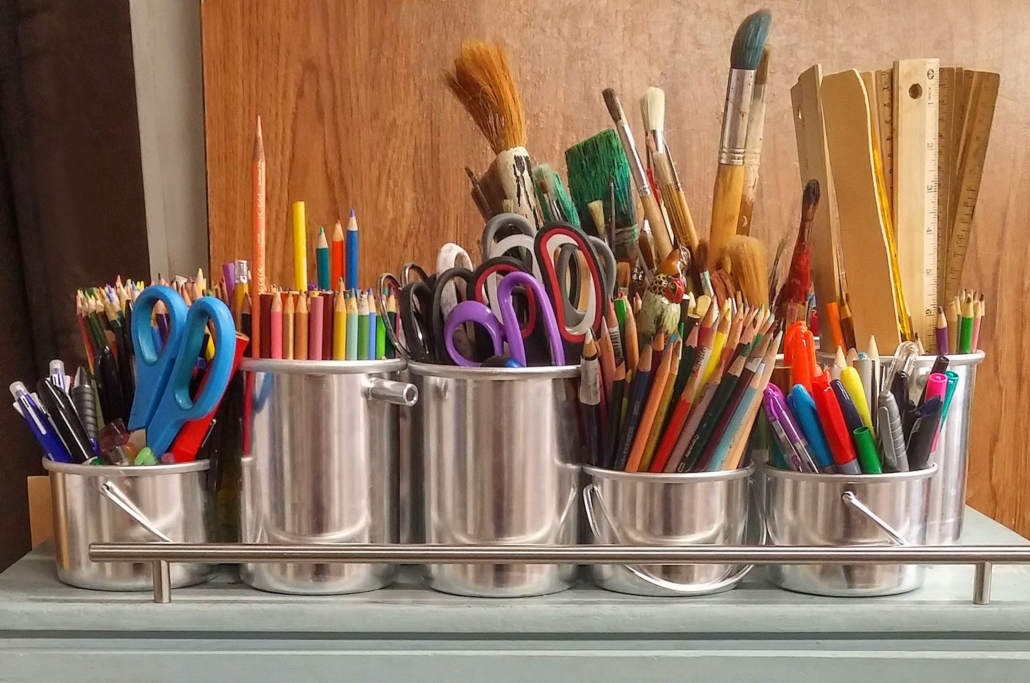How to Create an Effective Homeschooling System
With the recent stay at home orders, schools across the country have been closed for the remainder or the school year. As a result, most parents have been pushed to homeschool their kids. Not all parents are teachers, of course, so plenty of them will struggle to offer effective lesson plans.
The key to being a good teacher is to have the right supplies, good organization, a schedule, and ways to make learning fun. Check out some of our homeschooling ideas, and use them to improve your own strategy at home.
Supplies

To ensure that you’re homeschooling plans go along smoothly, you need some essential homeschool supplies. Here’s what you should be focusing on:
Focus on The Essentials First
When shopping for school supplies, always focus on the essentials first. Students need a way to keep organized, so they’ll need notebooks and binders. They’ll also need pencils, markers, glue, erasers, staplers and scissors as well, so focus on getting these. Other items, like art supplies, can come later.
Supplies to Buy for Yourself
Of course, you’ll need supplies for yourself as well. Grab a hole punch, a pencil sharpener, a daily planner, Post-it notes for reminders, and a white board. You’ll need some of these supplies to keep organized as you work with your students.
Get Plastic Drawers or Organizers for Storage
To keep your house from getting cluttered with supplies, you’ll need some storage options. Shop for plastic drawers so you can store art supplies, binders, and notebooks at the end of the day. You should also buy some desktop organizers and baskets for storing other supplies, like pencils, erasers, and pens.
Developing Your Schedule

A good homeschooling plan needs a good schedule. Here are some tips you should follow when you’re crafting yours.
Craft a Plan Based on the Existing Schedule
When developing a schedule for your students, you don’t have to break new ground. Ask your kids what a typical school day is like for them (specifically, ask how long they spend on certain subjects, and in which order they’re taught). If your school is using a hybrid system with some days in the classroom and others at home, the schedule will likely be provided for you and consistent. If this is the case, then it’s important to stay up to date on the “new normal” in schools so you can adjust your homeschooling as necessary.
In the process, make sure your kids are getting enough time for each of the required subjects.
Don’t Teach Every Subject Each Day
While most public schools focus on teaching students each subject every day, it might not be the best thing to shoot for when you start homeschooling. If your students are new to learning from home, piling up too much work at once can be overwhelming.
Try to break up the subjects across different days of the week to ease your students into this new lifestyle. As they get more used to homeschooling, you can see about teaching more each day.
Make Time for Breaks
It’s important to remember that kids get time for breaks at school, so you need to incorporate them into your schedule. Set aside time for breaks so your kids can have lunch or play a game for a short while. You don’t want your kids getting burned out from nonstop work.
Be Flexible
The most important part of planning a homeschooling schedule is knowing how to be flexible. While you’re teaching at home, things can come up, like an important phone call for work or a sudden family emergency.
When something like this happens, don’t be afraid to cut classes short for the day. Don’t feel as though you have to stick to whatever schedule you’ve created. You can always come back to a lesson later on.
Keeping Organized

Every good teacher needs a sense of organization. Use these organization tips to keep you and your students on track.
Create a Dedicated Learning Space
The best way to get your child into the mood for learning is to create a dedicated teaching space. By setting up a space like a classroom, your children will feel like they’re back at school, instead of being at home. This keeps them from getting distracted by things around the house.
Keep a Planner or Calendar Nearby
With everyone being stuck at home, it’s easy to lose track of which day of the week it is. This can make it easy to forget what you need to teach your kids on a given day. Always keep a spare planner around so you can write down which subjects to focus on.
An alternative would be to hang up a calendar in your student’s learning space that you can follow. It’s easy to lose track of time, but a little planning can keep this from being an issue. Make a List of Assignments for Students
At the start of each day, grab a piece of paper and write down a list of assignments for your students to work on. As students make progress on these assignments, take this piece of paper and mark a check for each one that’s completed.
Not only will this help you see how your students are doing, it will also let you keep track of the tasks that have been done each day. Save these lists so you can get the full picture of how much work your students have done over the coming months.
Label Everything
With so many lessons and subjects to cover, it’s easy to lose track of everything you and your children been working on. Losing track of assignments and papers will only create headaches, so you need to keep everything organized.
Try to label your children’s notebooks, along with storage options, so you don’t forget where everything is. Label your art supply drawers and write down which notebook is used for each subject.
Make Learning Fun

Learning from home can be stressful for kids, so you should always try to make the process fun for them. Here are a few recommendations:
Use Games to Teach
When you’re teaching something like math, it’s easy to incorporate games into your lesson plan. For example, board games like Sequence Numbers can help kids learn about addition and subtraction. Websites like Math Playground offer several online games for mathematics, which are perfect for younger kids.
When your kids are having fun while learning, they’re far more likely to retain what they’ve been taught.
Offer Rewards
Offering small rewards to students for performing well is a good way to keep them motivated.
For example, if they manage to complete a challenging task, you could reward them with some candy or a dessert. If you give them a test and they perform well, reward them with something a little bigger. This lets students know they’re doing a good job, and they’ll want to work harder.
However, it’s important that you don’t go overboard with handing out rewards for every accomplishment. If you aren’t careful, your kids will expect something for every assignment they finish, and you won’t be able to keep up with that (or afford it).
Teach Fun Things Outside the Curriculum
Not everything you teach has to be part of the standard school curriculum. Make some time for lessons about other fun things, like art, or even simple baking! Lessons like these will allow your kids to focus on their creative side, and help them find out what they’re passionate about. Plus, it’s a nice change of pace from all the standard lessons.
Need to pick up supplies to go with your homeschooling setup? CMF Business Supplies has a wide range available for purchase.




